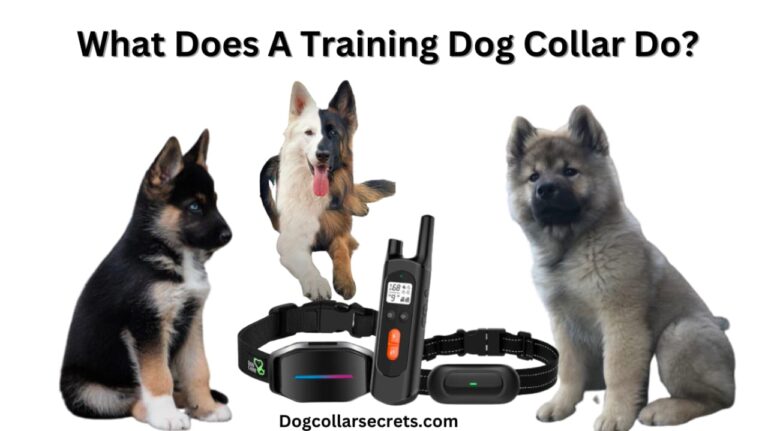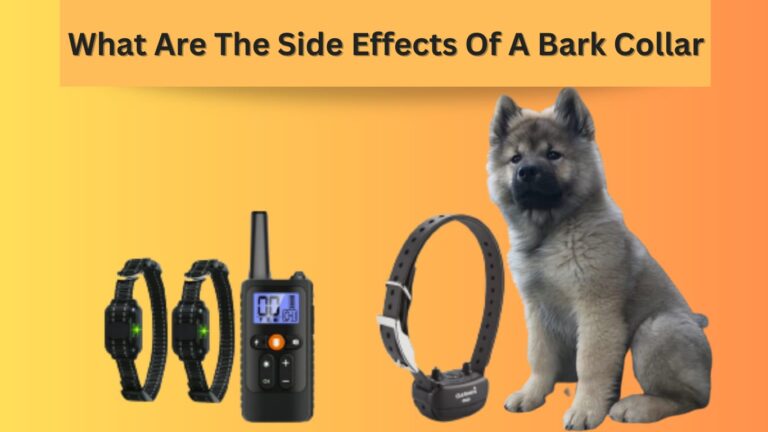Frequently Asked Questions About Shock Collars:

Frequently Asked Questions About Shock Collars-Training Collars:
Shock collars, also known as electronic collars, e-collars, or remote training collars, are devices designed for dog training and behavior correction. These collars are equipped with electronic components that can deliver mild electric shocks or vibrations to your dog when triggered by a remote control. While they have been used in various training scenarios, it’s essential to understand how they work, their potential benefits, and concerns associated with their use.
FAQs About Shock Collars
Below, we’ve compiled some frequently asked questions (FAQs) that people often inquire about regarding shock collars. Understanding these common queries can help you make informed decisions about their use and whether they are suitable for your dog’s training needs.
Do Shock Collars Activate When Another Dog Barks?
Yes, shock collars can activate when another dog barks if they are set to a high sensitivity level and are designed to respond to sound triggers. However, not all shock collars have this feature, and it depends on the specific settings and design of the collar. Read in detail
Is a shock collar bad for dogs?
Shock collars can be harmful to dogs if not used properly. They can cause physical and psychological distress, anxiety, and fear. Positive reinforcement training methods are generally considered more humane and effective for behavior modification. Consult a professional dog trainer for alternative training techniques that prioritize your dog’s well-being. Read in detail
Does a shock collar help with jumping and barking?
Shock collars can be used to address jumping and barking issues in dogs, but they should be used with caution. While they can provide immediate correction, they may also lead to fear or aggression if not used properly. Positive reinforcement training methods are generally recommended as a more humane and practical approach to addressing these behaviors. Consult a professional dog trainer for guidance on using appropriate training techniques. Read in detail
How To Stop Dog Barking Without Shock Collar?
To stop a dog barking without a shock collar, first, identify the cause of the barking. Use positive reinforcement, rewarding silence with treats and praise. Ensure your dog gets regular exercise and mental stimulation, and seek professional training if needed to address underlying behavioral issues. Read in detail
How to use a shock collar to stop barking?
Using a shock collar to stop barking should be done with caution and as a last resort. Start by selecting the lowest intensity setting. When your dog barks inappropriately, deliver a brief, single shock. Pair this with a verbal command like “quiet.” Gradually reduce shock intensity as your dog learns to associate the power with silence. Always prioritize humane training methods and consult a professional for guidance. Read in detail
Do non-shock collars work?
Yes, non-shock collars, such as citronella or vibration collars, can effectively deter barking in some dogs through aversion or distraction without causing harm. Their effectiveness may vary depending on the individual dog’s temperament and the specific barking issue. Read in detail
What can I use instead of a shock collar?
Instead of a shock collar, consider using positive reinforcement training techniques, such as treats and praise, or non-shock deterrent collars like citronella or vibration collars to address unwanted behavior in dogs.
Will a shock collar stop two dogs from fighting?
A shock collar is not a recommended solution for stopping dogs from fighting. It may escalate aggression and harm the dogs. Professional intervention, training, and behavior modification are safer ways to address dog aggression issues.
Do vets recommend shock collars?
Many veterinarians do not recommend shock collars due to the potential harm and stress they can cause. They often advise alternative, humane training methods for behavior modification.
Shock collar side effects
Shock collar side effects can include fear, anxiety, and aggression in dogs, as they associate shocks with discomfort or pain. Additionally, there’s a risk of physical harm and reduced trust between the dog and its owner.
Can a shock collar kill a dog?
In rare cases, a shock collar with high-intensity settings or prolonged misuse can potentially cause severe physical harm or distress to a dog, which could lead to serious health issues or, in extreme cases, be life-threatening.
Conclusion
A training collar can help teach your dog, but it’s crucial to use it the right way.
Go at a comfortable pace, stay patient, and always combine the collar with rewards for good behavior. Follow the advice in this article to slowly and safely introduce your dog to the training collar.
You may also read this: Do Bark Collars Work On Large Dogs?





